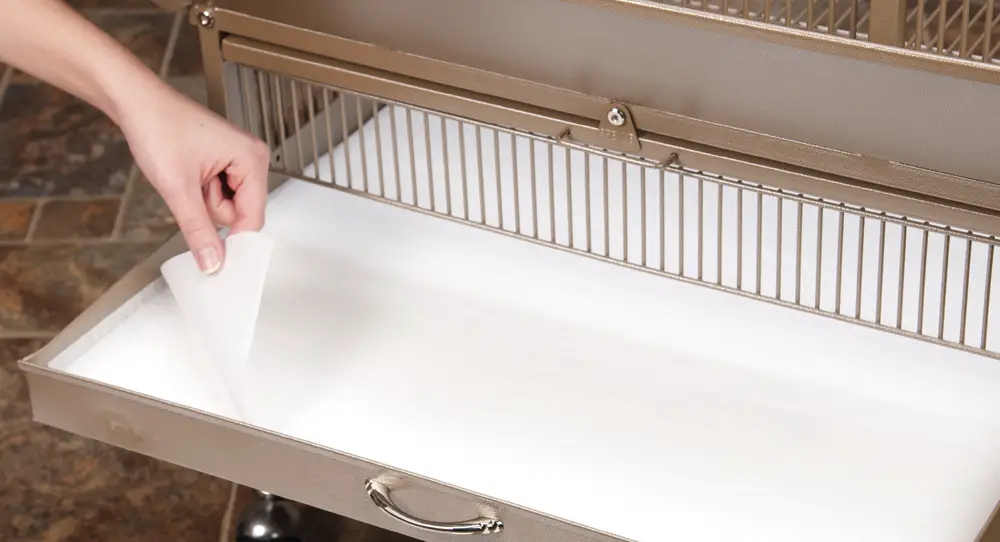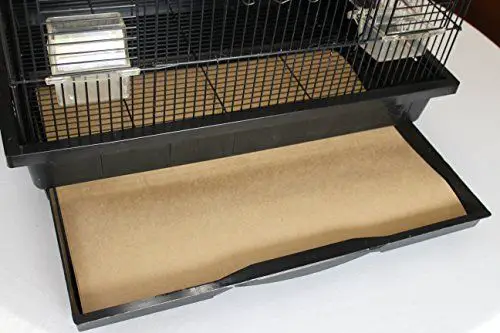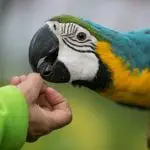If you are a beginner in caring for birds, you have to familiarize yourself with cage maintenance. One of the most important things to know about is lining the bottom of the bird’s cage. Basically, this part of the cage has a very straightforward job. The lining for the cage is used to collect things that land there, which makes the cleanup much easier for birdkeepers. Though it can be simple, cage lining plays a very important role in the maintenance and keeping your pet healthy and safe.
Now that you know the main purpose of this, the question that you should ask yourself is this: What would be the best type of bird cage lining for the cage of your pet bird? In this article, you will find your answer.
The Best Type of Cage Lining That You Can Use: Paper
All bird care experts stand by this. Without question, the paper is the best type of substrate for your bird. Butcher paper, paper towels, paper bags, newspaper, and other forms of paper are the best type to use for your bird’s cage. It does not matter which one you should go for; the most important thing is that the material is strong and sturdy enough to stay put and sit patiently while waiting for your bird to put it to work.
The best thing about this substrate is that it is the most economical type to use. Another great bonus? This cage lining knows how to lie flat. This is very important because, as bird owners, one of the only ways to ensure that your pet birds stay happy and healthy is checking out and monitoring the quantity and quality of their bird droppings. Of course, this fact can be difficult to do when the surface of the cage is broken and uneven.
Different Types of Cage Linings & Whether They Are Appropriate For Birds

· Wood Shavings & Wood Chips
These types of substrates are not recommended for birds because they are toxic, should birds ever become in contact with them. Whether it is treated pine, redwood, or cedar, the scent of these wood shavings can irritate the birds and cause skin inflammations and some allergic reactions.
Additionally, a problem that you can get with using wood chips and shavings is that they create uneven surfaces, which can make it much more difficult to view the quality of the bird’s droppings.
Some people love using these bird droppings because they can mask the foul odors inside the cage. However, it should be noted that there should be no odors in the cage of a healthy bird. Therefore, if you notice that the droppings of your bird smell foul, you should go to the vet because your bird is sick. If you use substrates that smell, it will hinder you from checking out and knowing that your bird needs help.
· Untreated Pine Shavings
Now, on this other matter, how about untreated pine shavings? Though these things are safe unless they are ingested, they also can be considered impractical. You will always have to change this and sift through the debris quite frequently. It will make it difficult for you to observe your bird’s droppings.
Aside from these findings, wood chips allow minuscule particles, like dander and powder, to drop through the cracks to the tray below. This also means that if your bird flaps its wings and takes flight, it will cause the small particles to rise up and out into the air space. You will not be able to sweep and vacuum bedding to remove dander, so it can be so difficult.
· Corncob and Crushed Walnut Shells
While both of these things are natural, they can produce problems because they can provide a breeding ground for the growth of bacteria, fungi, and molds. Corncob substrates can be very concerning because in climates where it can be damp and humid. This is because this humidity is where the aspergillus mold might develop. Aspergillus mold can cause respiratory problems and lead to fatality in your pet. If this is swallowed, your bird’s digestive system can be impacted, as the pieces swell whenever it encounters moisture.
· Kitty Litter
Kitty litter is not a good choice for bird cage linings, as well. It can be made from play, which produces dust, with high chances of damaging the delicate respiratory system of your bird. Additionally, when you encounter clumping litter, you have to deal with a substance that grows enormously large in size and clots together when you introduce moisture. If damp toys and food get damped into the litter then retrieved, the litter will stick to it. That problem is extremely problematic for the bird’s digestive system.
· Sand
Another substrate that is not recommended for birds is sand. The main concern with this substrate is that it can get ingested by the pet bird. When it is ingested, it can be too dense, abrasive, and weighty, which can make the cleaning messy and difficult, too. Over time, this will eventually cause problems in the lining of the cage bottom, especially towards the back of the cage.
Additionally, some bird keepers have reported that using sand as a cage lining has brought up flea infestations inside the pet’s homes. But, when this problem was investigated, usually, it was filled with small crustaceans that only reside at the beach.
· Paper Pellets or Pulp Beddings
These substrates are also not recommended. Though they are safe to use, there can be a chance that your birds might ingest them. These substrates have not been reported to lead to problems in the digestive system, as paper can easily be broken down and passed through the system. But, the pulp can indeed fly out everywhere as soon as the bird becomes active in the cage. Additionally, both of them can lead to a hard time in trying to monitor bird droppings properly.
If you have cockatoos, cockatiels, and other birds that love foraging under the ground, bedding can be a fun place to search for old food that you can mess up during clean-up time. Unfortunately, these old food pieces are laden with dangerous bacteria that can harm your pet.
· Newspapers
A newspaper is a great substrate option that is safe and non-toxic. They are the best choice to use for a cage liner because it is very inexpensive. In fact, you can even have these papers for free. If you notice that the local paper gets delivered to your neighbor, you can approach them and ask them to save old papers that you can pick up every once in a while.
You can also ask from the local library, department stores, convenience stores, diners, and other establishments, for them to give you their old newspapers for free. This fact makes it very economical, ecological, safe, and a smart choice for your pet bird’s cage.
Final Thoughts
Every cage liner has its advantages and disadvantages. At the end of the day, it is important to weigh your options very carefully so that you can provide the best type of care for your pet bird. What is important is that you, as an owner, understand that you have an obligation to clean the bird aviary to protect the overall quality of life of your bird.


